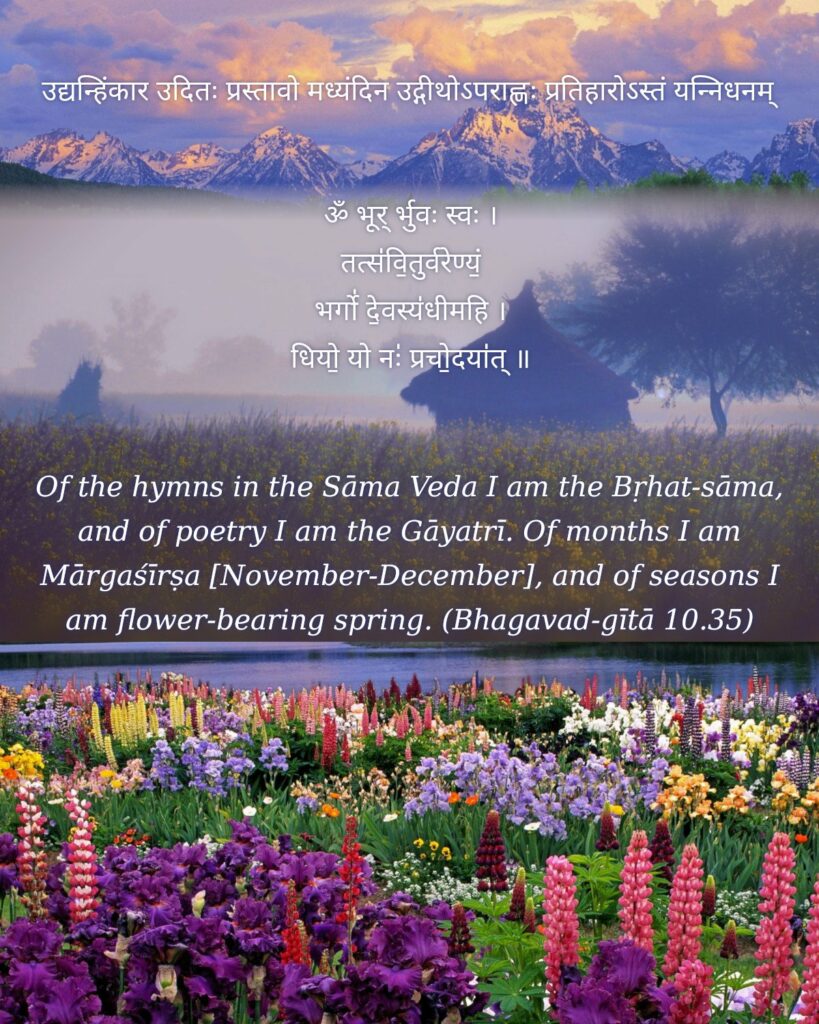बृहत्साम तथा साम्नां गायत्री छन्दसामहम् |
मासानां मार्गशीर्षोऽहमृतूनां कुसुमाकर: || 35||
bṛihat-sāma tathā sāmnāṁ gāyatrī chhandasām aham
māsānāṁ mārga-śhīrṣho ’ham ṛitūnāṁ kusumākaraḥ
bṛihat-sāma—the Brihatsama; tathā—also; sāmnām—amongst the hymns in the Sama Veda; gāyatrī—the Gayatri mantra; chhandasām—amongst poetic meters; aham—I; māsānām—of the twelve months; mārga-śhīrṣhaḥ—the month of November-December; aham—I; ṛitūnām—of all seasons; kusuma-ākaraḥ—spring
Translation:
Of the Sāman hymns I am the Brihat-Sāman, and of metres I am the Gāyatri. Of months I am Mārga-śirsha, and of seasons I am the flowery spring.
Commentary:
The prominence of Margasirsha is to be known from the following :
(1) At the time of the Mahabharata, the year used to start with the month of Margasirsha.
(2) The Sastras declare that the month is most suitable and meritorious for the performance of vows and fasts etc.
(3) People obtain the new harvest and there is general prosperity.
(4) It is stated in the Ramayana, that Margasirsha is the ornament of the year.
(5) The Bhagavad Gita was proclaimed to Arjuna in the month of Margasirsha (Suddha ekadasi) on the 11th day of the bright fortnight.
(6) Dattatreya was born in the same month (Suddha Purnima).
(7) The atmosphere is pleasant and equable and so the month is most suitable for tapas and Sadhana (Spiritual practice).
Kusumakarah: The spring season is the most beautiful, and nature puts forth all her beauty. Sri Rama was born in the month of Chaitra.
Bhagavad Gita: Chapter 10 🔻 (42 Verses)
